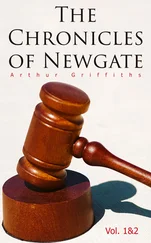Table of Contents
This eminent officer was descended from a younger branch of an ancient family, long resident in the county of Somerset. His father lived at Walton upon Thames, where George Brydges Rodney, afterwards Lord Rodney, was born, February 19, 1718. He received the rudiments of his education at Harrow School, from which he was removed when only twelve years old, and sent to sea. He gained promotion rapidly, being made Lieutenant in February, 1739, and Captain in 1742. He was still farther fortunate in being almost constantly employed for several years. In the Eagle, of sixty guns, Captain Rodney bore a distinguished part in the action fought by Admiral Hawke with the French fleet, off Cape Finisterre, October 14, 1747. The year after he was sent out with the rank of Commodore, as Governor and Commander-in-Chief on the Newfoundland station, where he remained till October, 1752.
Returning to England, he took his seat in Parliament for the borough of Saltash, and was successively appointed to the Fougueux, of sixty-four guns, the Prince George, of ninety, and the Dublin, of seventy-four guns. In the last-named ship he served under Admiral Hawke in the expedition against Rochefort in 1757, which failed entirely, after great expense had been incurred, and great expectations raised; and he assisted at the capture of Louisburg by Admiral Boscawen in 1758. He was raised to the rank of Rear-Admiral, May 19, 1759, after twenty-eight years of active and almost uninterrupted service.
In July following he was ordered to take the command of a squadron destined to attack Havre, and destroy a number of flat-bottomed boats, prepared, it was supposed, to assist a meditated invasion of Great Britain. This service he effectually performed.

Engraved by E. Scriven. LORD RODNEY. From a Picture by Sir Joshua Reynolds in his Majesty’s Collection at S t.James’s Palace. Under the Superintendance of the Society for the Diffusion of Useful Knowledge. London, Published by Charles Knight, Pall Mall East.
He was soon raised to a more important sphere of action, being named Commander-in-Chief at Barbadoes and the Leeward Islands, in the autumn of 1761. No naval achievement of remarkable brilliance occurred during the short period of his holding this command: but the capture of the valuable islands of Martinique, St. Lucia, and Grenada, bears testimony to the efficiency of the fleet under his orders, and the good understanding between the land and sea forces employed in this service. He was recalled on the conclusion of peace in 1763. Eight years elapsed before he was again called into service; a period fruitful in marks of favour from the crown, though barren of professional laurels. He was created a Baronet soon after his return; he was raised by successive steps to the rank of Vice-Admiral of the Red; and he was appointed Governor of Greenwich Hospital. This office he was required to resign on being again sent out to the West Indies as Commander-in-Chief at Jamaica in 1771. This was a period of profound peace: but the duties of peace are often more difficult, and require more moral courage for their discharge, than those of war. It is one of Rodney’s best claims to distinction, that he suffered none under his command, or within the sphere of his influence, to neglect their duties with impunity: and in the mode of carrying on naval affairs then practised in the West Indies, he found much ground for immediate interference, as well as for representation and remonstrance to his superiors at home. He earnestly desired to obtain the government of Jamaica; but on a vacancy occurring in 1773, another person was appointed; and he was recalled, and struck his flag at Portsmouth, September 4, 1774.
The next four years of Sir George Rodney’s life were much harassed by pecuniary embarrassment. The habits of a sailor’s life are proverbially unsuited to strict economy: and moving, when at home, in the most fashionable society of London, it is no wonder that his expenses outran his professional gains. He was compelled to retire to Paris, where he remained until the American war afforded a prospect of his being called into active service again. In May, 1778, he was promoted to the rank of Admiral of the White: but it was not till the autumn of 1779 that he was gratified by being re-appointed to the command on the Barbadoes station. He sailed from Plymouth December 29, to enter on the final and crowning scene of his glory.
At this time Spain and France were at war with England. The memorable siege of Gibraltar was in progress, and a Spanish fleet blockaded the Straits. The British navy was reduced unwarrantably low in point of disposable force; and was farther crippled by a spirit of disunion and jealousy among its officers, arising partly perhaps from the virulence of party politics, and partly from the misconduct of the Admiralty, which threatened even worse consequences than the mere want of physical force. By this spirit Sir George Rodney’s fleet was deeply tainted, to his great mortification and the great injury of the country. At first, however, every thing appeared to prosper. The fleet consisted of twenty-two sail of the line, and eight frigates. Before Rodney had been at sea ten days, he captured seven Spanish vessels of war, with a large convoy of provisions and stores; and on January 16, near Cape St. Vincent, afterwards made memorable by a more important action, he encountered a Spanish fleet commanded by Don Juan de Langara, of eleven ships of the line and two frigates. The superiority of the British force rendered victory certain. Five Spanish ships were taken, and two destroyed; and had not the action been in the night, and in tempestuous weather, probably every ship would have been captured. These at least are the reasons which Rodney gave in his despatches, for not having done more: in private letters he hints that he was ill-supported by his captains. Trifling as this success would have seemed in later times, it was then very acceptable to the country; and the Admiral received the thanks of both Houses of Parliament. The scandalous feeling of jealousy of their commander, ill-will to the ministry, or whatever other modification of party spirit it was, which could prevent brave men (and such they were) from performing their duty to the utmost in the hour of battle, broke out again with more violence when Rodney next came within sight of the enemy. This was near Martinique, April 17, 1780, about a month after his arrival in the West Indies. The French fleet, commanded by the Comte de Guichen, was slightly superior in force. Rodney’s intention was to attack the enemy’s rear in close order and with his whole strength; but his captains disobeyed his orders, deranged his plan, and careless of the signals for close action, repeatedly made, kept for the most part at cautious distance from the enemy. His own ship, the Sandwich, engaged for an hour and a half a seventy-four and two eighty-gun ships, compelled them to bear away, and broke completely through the enemy’s line. Not more than five or six ships did their duty. Had all done it, the victory over De Grasse might have been anticipated, and the end of the war accelerated perhaps by two years. In his despatches Rodney censured the conduct of his captains; but the Admiralty thought proper to suppress the passage. In his private letters to Lady Rodney, he complains bitterly. One only of his captains was brought to trial, and he was broken. That ampler justice was not done on the delinquents, is to be explained by the difficulty of finding officers to form courts martial, where almost all were equally guilty. But this partial severity, with the vigorous measures which the Admiral took to recall others to their duty, produced due effect, and we hear no more of want of discipline, or reluctance to engage. For this action Rodney received the thanks of the House of Commons, with a pension for himself and his family of £2000 per annum.
Читать дальше













